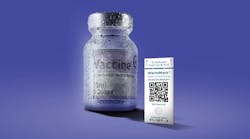With key product patent expirations, increased competition from generics and a push for price controls, pharmaceutical companies are under pressure to keep operational budgets to a minimum. A cost-effective manufacturing and supply chain can therefore give pharmaceutical companies a competitive advantage.
However, pharmaceutical production lines are inherently complex and rely on the free flow of information in order to operate at peak performance. Ensuring all the component parts in the value chain - from the warehouse and manufacturing plant through to the QC laboratory and distribution center - integrate seamlessly can be a significant challenge.
To manage this complexity and ensure processes run as efficiently as possible, many pharmaceutical companies are adopting integrated informatics solutions that combine often separate software packages into one scientific software platform - comprising a laboratory information management system (LIMS), chromatography data system (CDS), laboratory execution system (LES) or procedural electronic laboratory notebook (ELN), and scientific data management system (SDMS). Used in combination, this integrated approach to laboratory sample and data management can help manufacturers deliver the highest levels of product quality, meet regulatory guidelines and ensure production processes run as efficiently as possible.
INTEGRATED PRODUCTION LINE VALUE
Modern pharmaceutical production lines are highly integrated and require information to be shared between teams in order to function effectively. For instance, to release a particular batch of product to the market, manufacturers need to know that the batch has passed QC testing. Ensuring data is collected and rapidly distributed to the teams that need it is essential.
Yet a surprising number of manufacturers still rely on systems that are inefficient or disconnected from a data management standpoint. Even in the most sophisticated pharmaceutical environments, many labs still rely on physical notebooks which, with 100-percent manual content updating, inherently expose data to human errors and misinterpretation. Some larger labs even use paper-based systems to record data ranging from information on raw materials, stock usage and environmental measurements through to chromatographic data and instrument parameters. This fragmented approach to information management, often involving incompatible methods for data storage such as spreadsheets and proprietary software, can introduce errors, reduce operational efficiency and add an additional level of complexity to workflows.
But not only is poor data management inefficient, it also makes it more difficult for manufacturers to demonstrate they are compliant with regulatory guidelines. Regulatory bodies are demanding ever higher standards of data integrity - with the latest guidance from the U.S. Food and Drug Administration, European Medicines Agency, UK Medicines and Healthcare Products Regulatory Agency, China Food and Drug Administration and the Pharmaceutical Inspection Co-operation Scheme - all designed to safeguard data quality throughout the pharmaceutical development process, including product testing, manufacturing and packaging.
In addition to safeguarding data quality, manufacturers are also under increased pressure to prove data integrity and traceability for process workflows. When a LIMS works in conjunction with CDS software, all relevant information, including raw instrument data, process parameters and instrument calibration history, are available to access in a single convenient centralized location. Such integrated systems not only enable users to track all test processes and results, but also any and all changes made to the instrument or within the software, giving a complete record of who did what, when and why.
INTEGRATION FROM THE OUTSET
For many pharmaceutical manufacturers, the integrated supply chain begins even before the raw materials arrive at the warehouse. Purchasing departments will typically agree on product standards with suppliers of raw materials, which are subsequently used to assess quality, purity and stability of delivered goods. If the material has not been inspected before it leaves the vendor, then it will typically undergo testing in-house. In an industry which sources raw materials globally, this scrutiny of materials, and the need to establish proof of quality, is essential.
Delivered materials must be catalogued, sampled and analyzed, with the need for traceability at every stage of the manufacturing process - from receipt of raw materials, storage and movement within the manufacturing process to final quality control at the batch stage. With large volumes of stock to process, paper-based records can be impractical and are more prone to human error, as well as being inefficient to access at a later date.
In contrast, an integrated laboratory data management system offering a paperless solution based on a comprehensive LIMS platform, with full functionality for CDS, SDMS and ELN/LES, can improve accuracy and boost efficiency of data collection, processing and information recall. Such an approach also gives plant managers the security of knowing that all data related to the manufacturing process is fully archived and is available for regulatory review. The use of barcode scanning, for instance, can make tracking samples from the goods entrance to the analyst even more accurate and convenient when that barcode is stored as a record with the original sample in the LIMS and made available for retrieval when and where it is needed.
Using a LIMS to manage the flow of materials and sample testing from the outset, as well as the workflow in the lab itself, manufacturers have rapid and convenient access to chain of custody information for all materials used in a pharmaceutical product’s manufacture. When sample data are collected and stored centrally in a LIMS, authorized users can access a product’s entire manufacturing history, from raw materials through to batch release. Should a quality issue arise with a particular batch of raw material, preventative and corrective action can be taken much sooner, reducing the risk of costly batch failure. Integrated informatics solutions are thus able to deliver on the promise of data integrity and regulatory compliance, a critical concern for any lab in the pharmaceutical manufacturing business.
SAFEGUARDING QUALITY, EFFICIENTLY
In any pharma production process, quality is paramount. QC testing is performed at many different stages to assess the quality of raw materials and packaging components through to final drug product. While these tests are essential, it is also important that they are performed efficiently. Surprisingly, many QC laboratories still rely on paper-based systems for documenting standard operating procedures (SOPs), which are used by analysts to follow pre-defined workflows and/or manually configure instrument parameters. As well as being inherently inefficient, such practices leave workflows vulnerable to human error through misinterpretation or by omitting simple steps in the process or not performing them in the manner required. And when changes need to be made across a portfolio of SOPs to bring them in line with the latest guidelines, it can require significant time and resources to ensure each SOP is brought up to date. Imagine the increased possibility for errors when lab personnel are required to absorb and adhere to new SOPs and workflows that are maintained and distributed using paper-based systems.
However, by storing these SOPs in electronic format in a LIMS, analysts have access to all of the relevant protocol parameters for an entire analytical workflow at the click of a button. Using a LIMS with an in-built LES or procedural ELN, the operator can be taken step-wise through the SOP execution, the method parameters can be downloaded directly to the instrument and the sequence initiated automatically while the software records all actions. Such systems ensure analysts adhere to clearly defined protocols, meaning analyses are performed correctly every time and the complete data history is recorded, meeting the necessary SOP and regulatory requirements.
The latest integrated informatics solutions are further extending this efficiency to the data analysis stage. A CDS can apply intelligent run control options to analytical sequences, helping to minimize time lost through repeat sequence runs. In this way, the software can take automated, in-run pass or fail actions based on real-time chromatographic results that can, for example, instruct the instrument to re-inject samples, perform a dilution or abort a run without the need for user intervention. Such systems help to minimize the need to collect repeat measurements, further boosting process efficiency.
ROBUST INVENTORY MANAGEMENT
Whether a manufacturer is producing vitamin tablets or vaccines, a reliable supply of raw materials, consumables and packaging is essential for the uninterrupted operation of any pharmaceutical production line. Robust inventory management therefore plays an integral role in ensuring manufacturing doesn’t grind to an unexpected stop. Manufacturers can be limited by warehouse space, and inventory storage can be costly. In order to reduce unnecessary storage expenses and boost efficiency, many manufacturers will minimize the volume of stock that they hold. However, this strategy must be carefully managed; shortfalls in product packaging, for instance, can halt production and result in costly delays. The regular need to replace stock through expedited delivery at increased expense can quickly add to operating budgets. Such costs could have been avoided had the shortfall be identified earlier.
While spreadsheets can be used to track what stock has been used, they are not sufficiently dynamic to support live updates. An enterprise-level LIMS, on the other hand, is able to automatically record and trend up-to-the-minute usage based on real-time information from the production line itself, ensuring workflows always remain in operation. And because this LIMS is part of an integrated laboratory data management solution, all relevant personnel are informed of the inventory status, SOPs are not held up for lack of laboratory consumables and instruments are not sitting idle while stock is sourced from another location. As such, effective inventory management, together with optimized instrument use and the application of electronic SOPs driven by the LIMS, can significantly optimize manufacturing productivity.
ENVIRONMENTAL AND PROCESS MONITORING
Many stages in the pharmaceutical manufacturing and supply chain require careful control of environmental conditions. Raw materials and products can be sensitive to variables such as temperature and humidity and must be stored and monitored appropriately. This is particularly important in the production of biologics such as vaccines, which must be kept within a relatively narrow low-temperature range to maximize their shelf life.
Failure to maintain these conditions can have significant implications for process efficiency and even shut down manufacturing completely. A faulty refrigeration unit, for example, could result in the loss of an entire product batch. Yet equipment faults are often the result of a gradual decline in performance and can go unnoticed until acceptable limits are breached.
Integrated informatics platforms combined with environmental monitoring solutions can help manufacturers pinpoint issues more rapidly and take corrective and preventative action sooner. LIMS can track and trend environmental variables, identifying if operational performance is declining before tolerable limits are reached. Real-time tracking of data gives advance warning of problems so that maintenance can be scheduled in good time and supply chain disruption minimized.
Moreover, a LIMS can also ensure corrective and preventative action workflows are enforced when expected operating parameters are breached. The identification of nonoptimal humidity levels in a storage area can automatically trigger a workflow to investigate and resolve the issue. Such systems can ensure problems are resolved faster, and can help prevent similar problems from occurring in the future.
Some manufacturing and supply chains are spread across multiple sites and even across continents. While geographically distributed supply chains can bring benefits in terms of operational costs and the speed in which products reach end-users, they can lead to inconsistencies in processes and variation in performance. By monitoring and trending data associated with product quality or throughput between manufacturing sites using a LIMS, comparisons of performance can be made, and best practices shared to boost overall organizational efficiency.
Integrated informatics offer significant opportunities for drug manufacturers to increase operational efficiency and ensure the highest levels of QA and QC during pharmaceutical production. By bringing together the vast quantities of data collected throughout the production process, trends can be identified, workflows can be streamlined and decisions can be made more rapidly. Adding efficiencies like this to the manufacturing process can allow more time for added revenue-generating activities to be scheduled, add margin and profit back into production, and ultimately deliver on management’s promises to the company’s shareholders.





